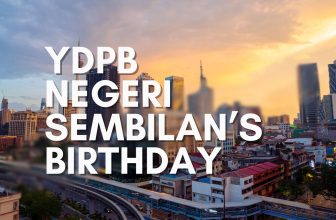In Singapore, the Chinese community and the entire country take part in a colorful and important cultural event known as Chinese New Year. It usually occurs between late January and mid-February and is based on the lunar calendar. Chinese New Year, also known as the Spring Festival, ushers in the Chinese zodiac cycle and is a time for families to gather together, rejoice, and exchange customs.
Chinese New Year 2024, 2025, and 2026:
| 2024 | 10 Feb | Saturday | Chinese New Year |
| 11 Feb | Sunday | Chinese New Year Holiday | |
| 12 Feb | Monday | Chinese New Year Holiday | |
| 2025 | 29 Jan | Wednesday | Chinese New Year |
| 30 Jan | Thursday | Chinese New Year Holiday | |
| 2026 | 17 Feb | Tuesday | Chinese New Year |
| 18 Feb | Wednesday | Chinese New Year Holiday |
These dates are estimated. We will update this page once the official announcement is out.
The weeks preceding Chinese New Year in Singapore are marked by humming marketplaces, vibrant decorations, and a tangible feeling of enthusiasm. Both locals and visitors are drawn to the famous Chinatown neighborhood, which is transformed into a sight of lights and holiday decorations. The streets are decorated with customary red lanterns, intricate arches, and extravagant displays, which animate and delight the neighborhood.
The Chingay Parade, a huge street parade with colorful floats, fascinating performances, and traditional lion and dragon dances, is one of the most eagerly awaited events. This parade brings together people from all walks of life to celebrate the holiday spirit while showcasing Singapore’s rich cultural history.
Families perform extensive spring cleaning as a way to rid themselves of ill luck and welcome good fortune. Additionally, they use lucky objects like oranges, and tangerines, and expertly cut papercuts to adorn their homes. The centerpiece of the festivities are reunion meals, where family members get together to partake in a sumptuous feast with symbolic foods like fish, dumplings, and the well-known yusheng (a prosperity toss salad).
The gifting and receiving of red packets, also known as “ang baos” in Singapore, is one of the most thrilling traditions associated with Chinese New Year. Money is exchanged in these red envelopes as a symbol of good wishes and blessings for the upcoming year. Children in especially anticipate getting these gifts, which provide excitement to the celebrations.
As the clock strikes midnight, fireworks fill the night sky to welcome the New Year. This magnificent show is not only physically impressive but also symbolizes a custom of chasing away evil spirits and bringing in a new beginning.
Although there are many long-standing customs associated with Chinese New Year, Singapore’s mixed culture makes sure that everyone may enjoy the celebrations. The festivities are frequently attended by non-Chinese locals and visitors, giving it a genuinely inclusive and varied event.
In essence, Chinese New Year in Singapore is a celebration of harmony, joy, and cultural variety that honors the country’s Chinese ancestry while encapsulating the nation’s ethos of harmony and diversity.




